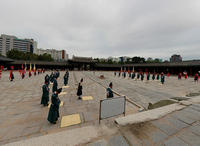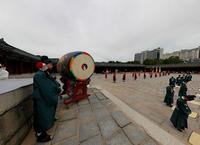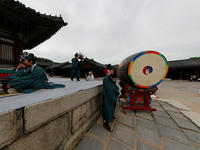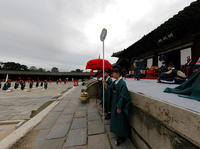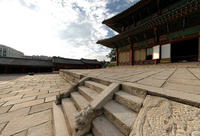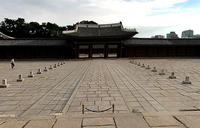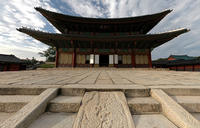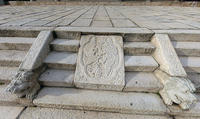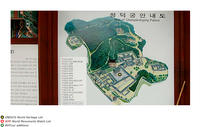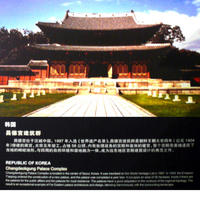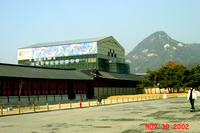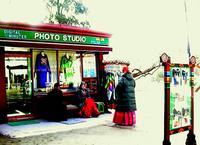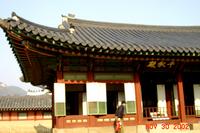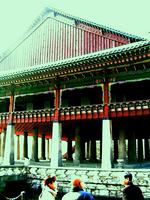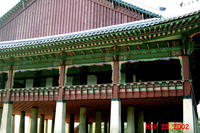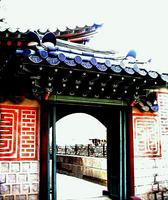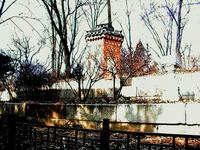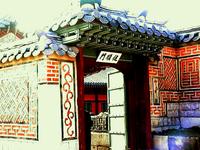You are in: Asia -> Korea, Republic of -> Changdeokgung Palace... , and traditional search or Image Gallery will yield results of this site only
Changdeokgung Palace Complex
| Site number: | 816 |
|
| Type of site: | Cultural | |
| Date: | 15th Century | |
| Date of Inscription: | 1997 | |
| Location: | Asia, Republic of Korea, Seoul | |
Up to 75 images are shown here. Click on each for more details or on Image Gallery for more images.
| Description: | The Emperor T'aejong began the construction of a new palace, the Changdeokgung Palace Complex, at an auspicious site in the early 15th century. To create the complex a Bureau of Palace Construction was set up, it was composed of numerous official and residential buildings placed within a garden that was expertly tailored to the irregular topography of the 58-ha site. The result outstandingly demonstrates Far Eastern palace architecture and design that harmoniously fuses with its immediate landscape. --WHMNet paraphrase from the description at WHC Site, where additional information is available. For 360 degree imaging of this site, click here. | |
| Changdeokgung (Changdeok Palace) is a palace set within a large park in Seoul, South Korea. It is one of the "Five Grand Palaces" built by the kings of the Joseon Dynasty and because of its location east of Gyeongbok Palace, Changdeokgung is also referred to as the East Palace. The literal meaning of Changdeokgung(昌德宮) is "Palace of Prospering Virtue". Changdeokgung was the favored palace of many kings of the Joseon Dynasty and retained many Korean elements dating from the Three Kingdoms of Korea period that were not incorporated in the more formalistic Gyeongbokgung. One such element is the fact that the buildings of Changdeokgung blend with the topography of the site instead of imposing upon nature. Changdeokgung was added to the UNESCO World Heritage List in 1997. The UNESCO committee inscribing the site stated the place was an "outstanding example of Far Eastern palace architecture and garden design" being exceptional because the buildings are "integrated into and harmonized with the natural setting" and adapted "to the topography and retaining indigenous tree cover." Portions of the palace were used to film the hugely popular Korean Drama Dae Jang Geum in the 2000s. --Wikipedia. Text is available under the Creative Commons Attribution-ShareAlike License. For 360 degree imaging of this site, click here. | ||
| Source: | http://whc.unesco.org/en/list/816 | |
| Reference: | 1. UNESCO World Heritage Center, Site Page. | |



